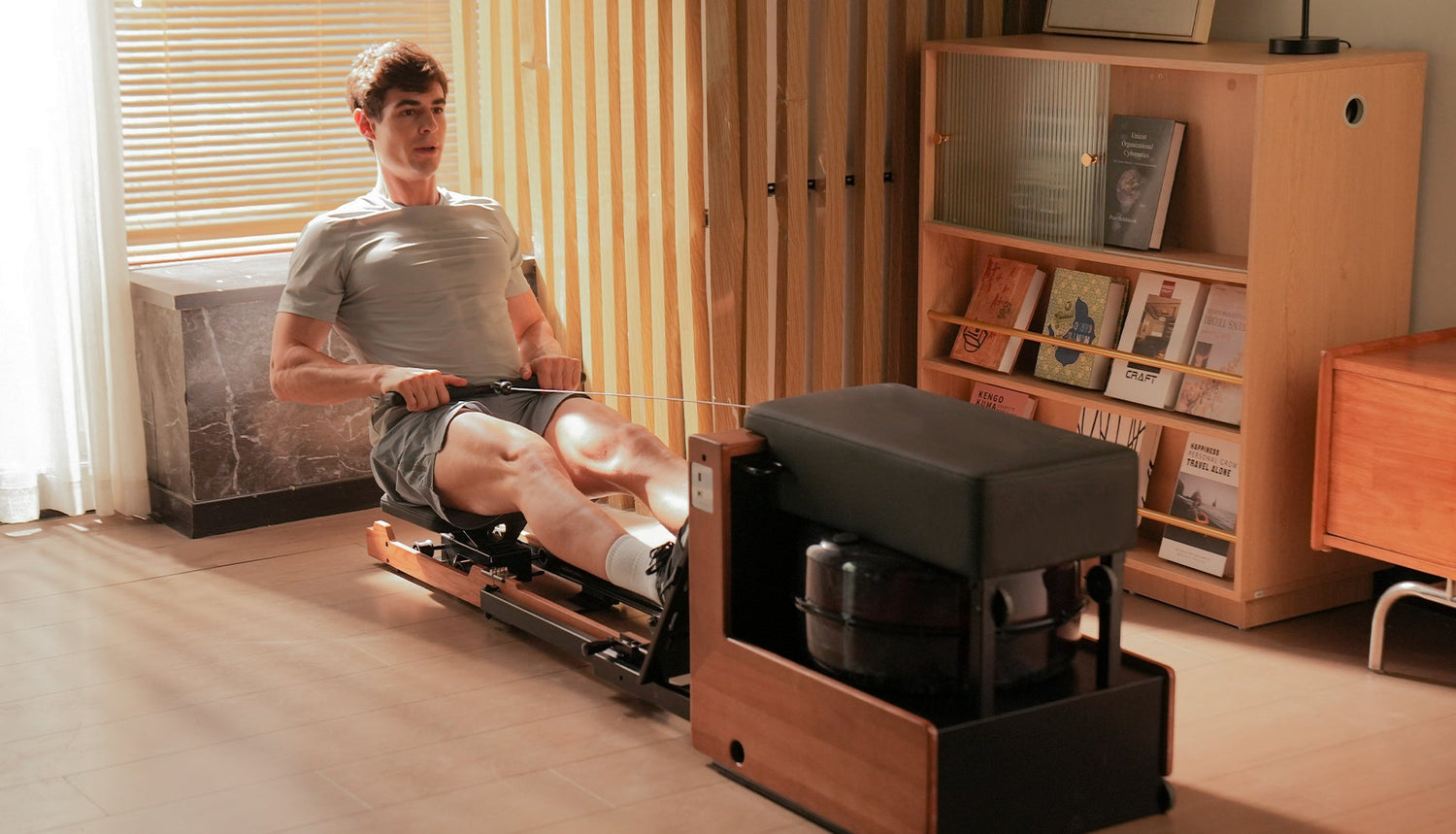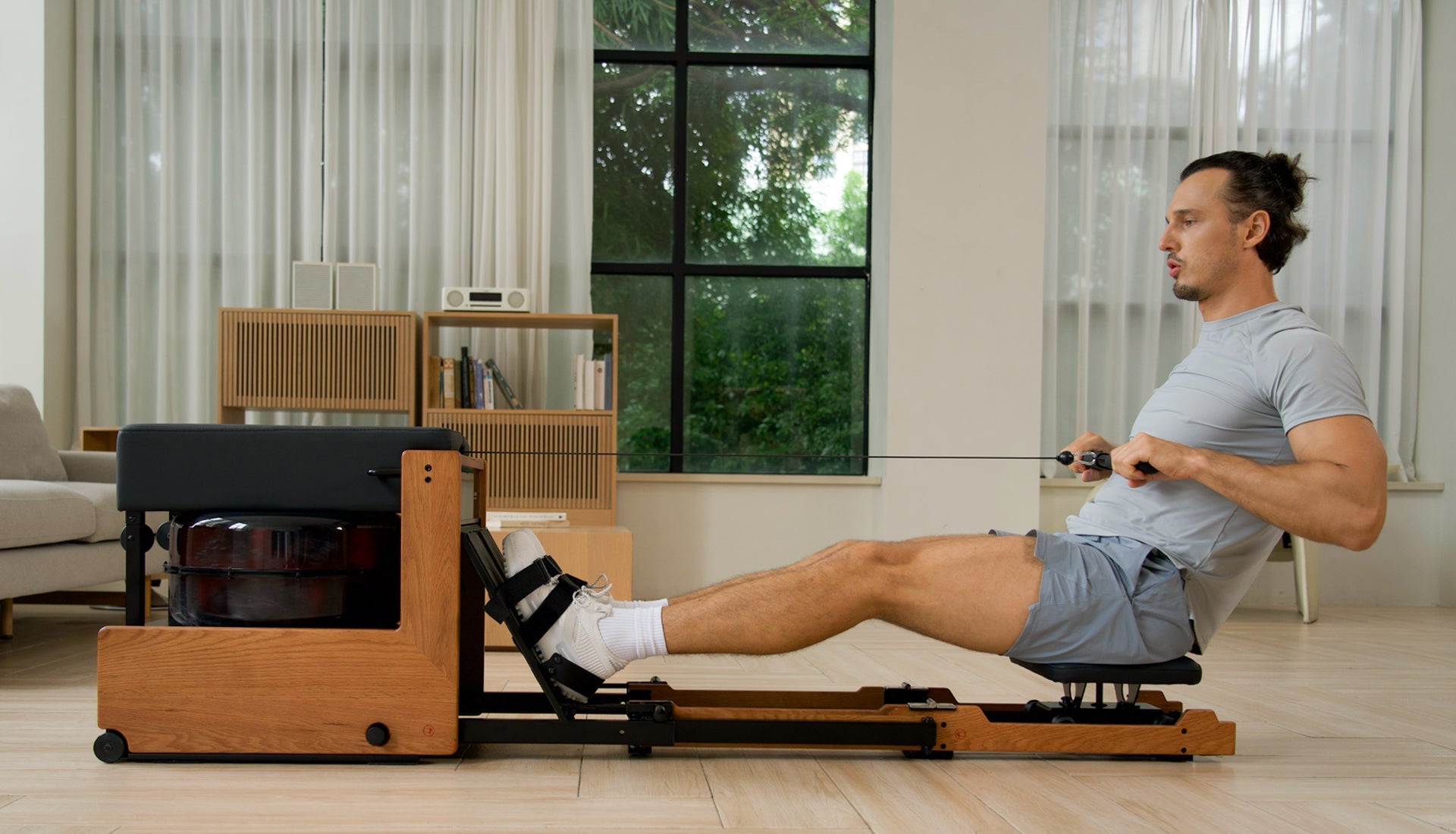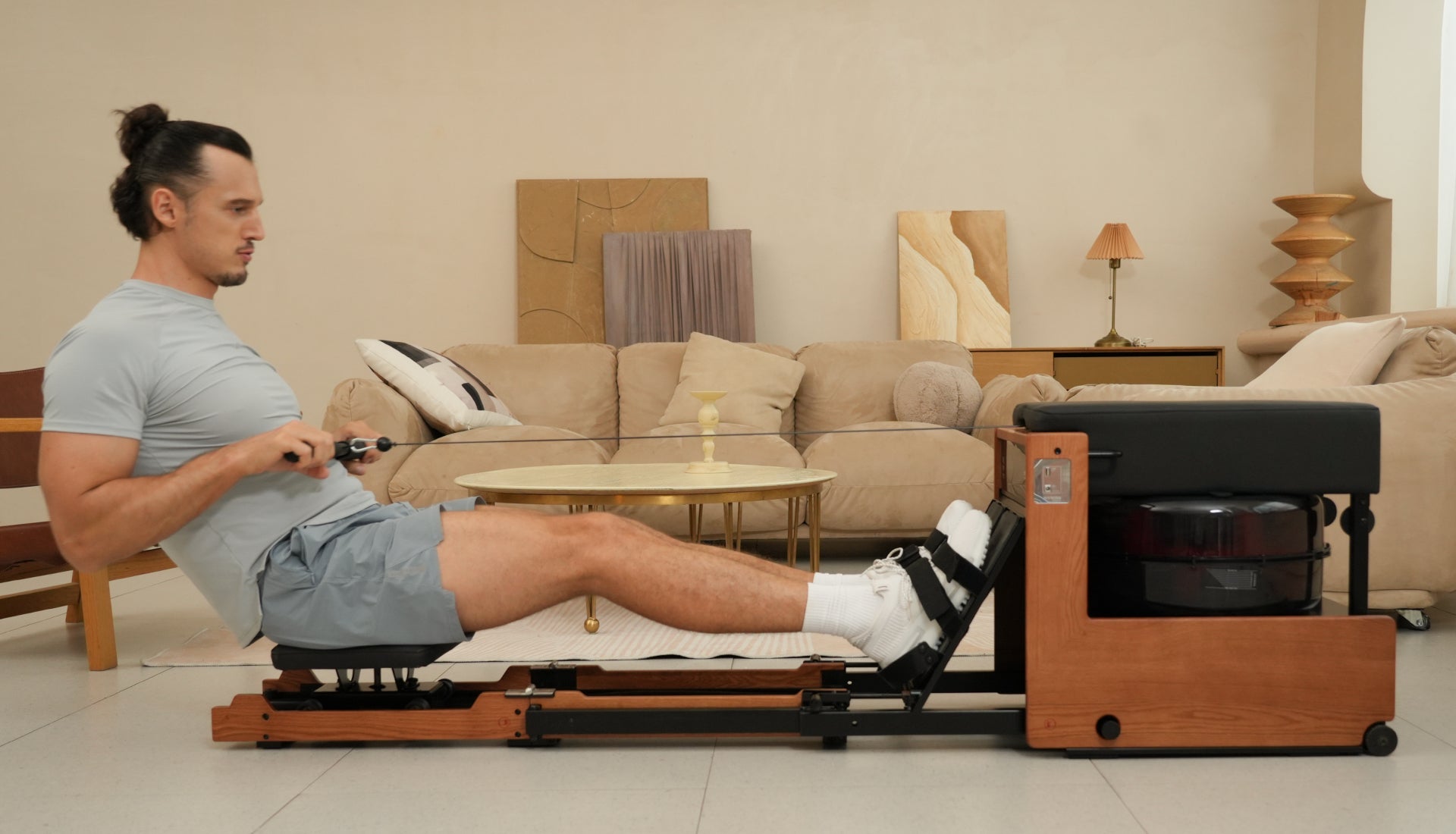Whether you’ve decided to take the plunge and invest in a home rowing machine or you’re hopping on one at the gym, you’ve made a smart fitness choice. Practically the Swiss Army knife of exercise equipment, rowing machines offer a full-body workout that strengthens your legs, arms, back, and core. In fact, one study by the English Institute of Sport revealed rowing engages an incredible 86% of your muscles.
Welcome to your 20-minute beginner rowing workout. Don't worry; we’ll start slow, so if you're new to the rowing game or just want to shake up your routine, this guide will perfect your technique and have you rowing like a pro in no time.
Get to Know Your Rowing Machine
Before we dive into the workout itself, let’s address the big - possibly intimidating - machine in front of you. Yes, it may seem to have more settings than a spaceship, but we won’t mess with all of those today. The most important parts are:
The Damper Setting
This is basically the resistance level, a bit like gears on a bike. We recommend setting it between 3 and 5 to start. You don’t want to crank it up to 10 just yet.

Foot Straps
Strap your feet in securely, but not so tight that you’re cutting off circulation. You want a snug fit so your feet stay in place but can still move freely.

The Handle
You’ll be pulling this, but it’s not a tug-of-war contest. Gentle and smooth strokes do the trick.
Step 1: Master Your Rowing Machine Technique
You may think rowing is about working those biceps, but you’d be wrong. It’s actually around 60% legs, 30% core, and 10% arms. Here’s the lowdown on your basic rowing machine technique:
The Catch Position
Start with your knees bent and arms fully extended, gripping the handle. Your back should be straight and slightly tilted forward from the hips. Imagine you’re about to leap off the line in a race – that’s the energy we’re going for.
The Drive
Push through your legs first (remember, it’s mostly legs!), then lean back slightly and pull the handle toward your chest.
The Finish
As you pull the handle to your chest, keep your elbows close to your body. Your legs should be fully extended, and your core should be engaged like you're bracing for an oncoming punch!
The Recovery
Reverse the motion by extending your arms first, then leaning your torso forward, and finally bending your knees to return to the starting position. Boom – one complete row.
Got all that? When all four elements are in flow, it’s like a graceful dance except you’re seated and sweating. But don’t worry about poise – just focus on smooth transitions between each of the movements, that’s the key.

Step 2: The 20-Minute Beginner Rowing Workout
Now that you’re equipped with your rowing technique basics, it’s time to jump into your beginner rowing workout. Grab your water bottle, cue up your favorite playlist, and get ready to row like a slightly less intense version of an Olympian.
Warm-Up (3 minutes)
Start with a gentle row to wake up those muscles. Focus on the technique we outlined above – smooth, controlled strokes. Aim for about 20 strokes per minute (SPM) and keep your intensity low. You’re just getting things going, so no need to sprint out of the gate.
Workout
This rowing workout for beginners is divided into four intervals, each designed to progressively increase your intensity while giving you time to recover in between. Don’t worry, it’s totally manageable – think of it as a rollercoaster, with the ups and downs keeping things exciting.
Interval 1: Moderate Pace (4 minutes)
- Pick up your pace to around 24 SPM.
- Maintain a steady, moderate intensity. Think; you're rowing across a calm lake, enjoying the view, but there’s a tiny bit of urgency.
- You should be able to hold a conversation, but you’d rather not because, you know, cardio.
Interval 2: Speed Burst (2 minutes)
- Time to spice things up. Increase your stroke rate to 28 SPM and push harder through the drive phase.
- This should feel challenging, but not overwhelmingly so.
Interval 3: Recovery Row (3 minutes)
- Slow things back down to 20-22 SPM, and row at a leisurely pace. You’re cruising now, enjoying a well-deserved break after that burst of energy.
- Catch your breath but keep moving. This is an active recovery – think of it as a pleasant paddle around the lake.
Interval 4: Power Push (4 minutes)
- Here’s the big finish! Up your pace to 26-28 SPM again, but this time focus on power. Push hard through the legs and engage your core for maximum drive.
- By the end of this interval, you should feel like you’ve earned a medal.
Cool Down (4 minutes)
- Slow things down to a light row, around 18-20 SPM. You’re winding down, letting your heart rate come back to normal.
- Reflect on your achievement, you just crushed a 20-minute rowing workout, well done.
Step 4: Post-Rowing Workout Stretches
While it may be tempting to just hop off the machine and call it a day, your muscles will need some TLC after all that rowing. Take a few minutes to shake out and stretch your legs, back, and arms so your body will thank you later.
Looking for the perfect rowing machine for beginners? Our JOYSONG Cube Rower Series features smart, high-performance home rowing machines that fold into compact cubes for effortless storage.





Leave a comment
This site is protected by hCaptcha and the hCaptcha Privacy Policy and Terms of Service apply.